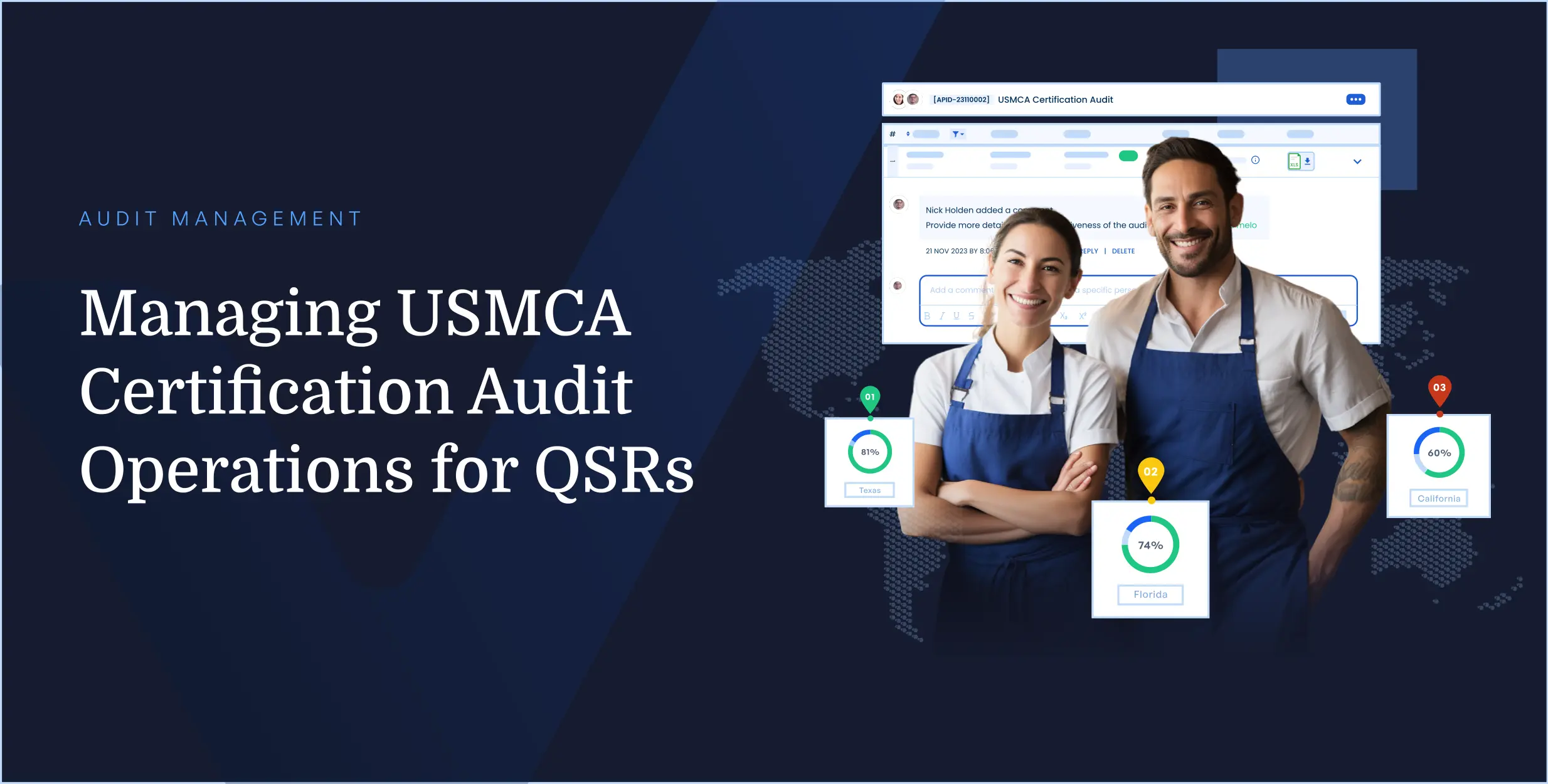Managing USMCA Certification Audit Operations for QSRs
The North American Quick Service Restaurant (QSR) industry is currently booming. Based on franchise models, QSRs continuously expand their presence nationally and internationally.
If you are part of an expanding QSR and responsible for managing audit activities, you must understand how crucial it is to handle USMCA certificates, commonly known as the USMCA Certificate of Origin.

USMCA certification audits are a significant component of your company’s compliance programs, requiring the management of certification documents, the gathering of evidence of compliance, and ultimately supporting the entire compliance audit process.
As an Audit Officer, you are often responsible for overseeing and managing the certification audit processes and helping auditors access the necessary resources for a successful audit.
Challenges
Every compliance and audit process has challenges, and the QSR certification audit process is no different.
When we delve deeper into a compliance officer’s daily struggles with USMCA certification audits, the following issues come up prominently:
- Sending hundreds of emails and making numerous phone calls to stakeholders spread across locations and franchises, resulting in decentralized communication.
- Collecting certificate of origin documents and other relevant evidence in physical format or through shared drives, requires significant manual labor to organize during audits.
- Inability to trace whether stakeholders are completing USMCA certification audit-related responsibilities on time before due dates.
Solution
If you and your audit team face the above issues, it is time to adopt a technology solution to simplify the USMCA audit process.
VComply AuditOps is designed explicitly for proactive audit professionals to help automate the process. The following are some highlighting features of the AuditOps platform that assist QSR audit professionals with USMCA certification audits.
Steps to follow
Step 1: Bring all audit stakeholders on a single platform
The USMCA audit process begins with establishing connections across all stakeholders and initiating communication. Conducting this through emails and phone calls is time-consuming and decentralizes communication.
With VComply, you can bring your team and other stakeholders onto a central platform to communicate and collaborate to manage audit activities.
VComply enables you to onboard people on the platform using their email IDs. Once onboarded, you can create specific workgroups to assign audit tasks.
Additionally, you can create location and franchise-specific audit responsibility centers, eliminating the need to visit locations physically and saving you and your team hours of travel time.
Step 2: Centralize audit plans, tasks, and evidence
USMCA requires QSRs to collect and manage certificates of origin for SKUs and other purchase items across all outlets. Managing certificates and evidence documents on such a large scale requires sound audit planning, a variety of audit tasks, and the centralization of collected evidence.
The traditional way of conducting meetings to define and communicate audit plans, followed by sharing tasks through spreadsheets and collecting evidence through shared drives, is time-consuming, inconsistent, and prone to the loss of information.
With AuditOps, all these activities can be done remotely in a central space called the Audit module. Here, you can create audit plans, define related tasks, and assign them to stakeholders with just a few clicks.
Once an audit plan and tasks are defined, an Audit Workroom is created where all stakeholders can register their completed tasks and upload audit documents and certificates of origin.
Auditors can access the audit workroom to review all audit documents in one centralized location.
Step 3: Automate alerts and notifications
USMCA certification audits are typically conducted annually, and there is a high likelihood that the concerned stakeholders responsible for these activities may forget about the timeline and due dates. As the audit leader, it is crucial to ensure that all stakeholders stay updated with proper timelines, due dates, and audit process requirements to maintain a consistent workflow.
When you create audit plans and tasks in AuditOps, automated alerts and notifications are sent to the responsible individuals, and this continues until the task has been completed. This feature helps keep everyone aware of deadlines and ensures the timely completion of tasks throughout the audit process.
Step 4: Stay connected and updated on actions
When the audit activities and evidence collection process are ongoing, sending messages or sharing comments on the submitted tasks and evidence is often necessary. Conducting review meetings or making multiple calls can be extremely tiring and time-consuming.
In the VComply Audit Workroom, you can share your review comments and notes through the comment section, facilitating centralized real-time communication and stakeholder collaboration.